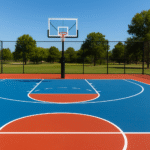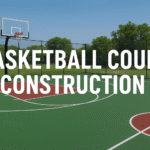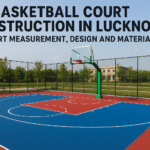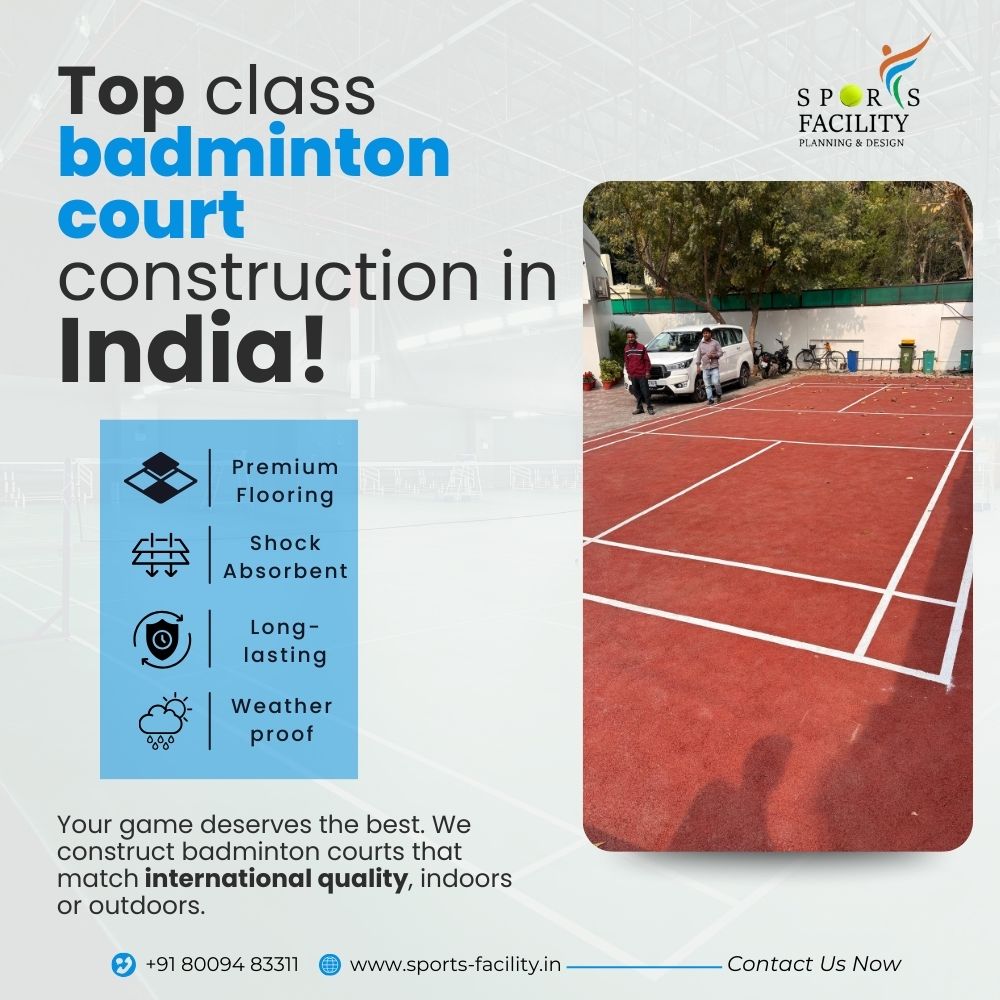Introduction
Badminton is one of the fastest-growing sports worldwide, governed internationally by the Badminton World Federation (BWF). To maintain uniformity and fairness, the BWF has established strict court dimensions and layout standards. Whether you are building a professional indoor arena, setting up a court in a sports complex, or simply curious about how courts are designed, understanding these standards is crucial.
A properly marked and dimensioned court ensures fair play, safety, and compliance with international regulations. In this guide, we will explore the official BWF badminton court dimensions, layout markings, and important considerations for construction and design.
Official Badminton Court Size
According to BWF regulations, a standard badminton court is a rectangular playing area measuring 13.40 meters (44 feet) in length and 6.10 meters (20 feet) in width. This court size remains the same for both singles and doubles matches, but the markings used differ slightly.
Key Dimensions:
-
Court Length: 13.40 meters (44 feet)
-
Court Width: 6.10 meters (20 feet)
-
Diagonal Length: Approximately 14.723 meters
-
Net Height:
-
At the posts: 1.55 meters (5 feet 1 inch)
-
At the center: 1.524 meters (5 feet)
-
Singles vs. Doubles Markings
Although the overall court size does not change, the playing areas differ slightly for singles and doubles matches.
Singles Court:
-
Width: 5.18 meters (17 feet)
-
Length: Full 13.40 meters (44 feet)
-
Service area is narrower compared to doubles.
Doubles Court:
-
Width: Full 6.10 meters (20 feet)
-
Length: 13.40 meters (44 feet)
-
Doubles has a wider service area but shorter service boundary compared to singles.
This distinction ensures balanced gameplay in both formats.
Service Court Dimensions
The service court plays a vital role in badminton since service rules are strict. Each side of the net is divided into two equal service courts by a center line.
-
Service Court Length: 4.72 meters (15 feet 6 inches)
-
Service Court Width: 2.59 meters (8 feet 6 inches)
-
Short Service Line Distance from Net: 1.98 meters (6 feet 6 inches)
-
Long Service Line for Doubles: 0.76 meters (2 feet 6 inches) inside the back boundary line
These dimensions ensure that players serve within a controlled area, minimizing unfair advantages.
Net Standards
The badminton net is central to gameplay and has strict standards:
-
Net Height at Posts: 1.55 meters (5 feet 1 inch)
-
Net Height at Center: 1.524 meters (5 feet)
-
Net Width: 6.10 meters (20 feet)
-
Net Depth: 760 mm (2 feet 6 inches)
-
Mesh Size: 15–20 mm
-
Top Tape: White tape of 75 mm (3 inches) covering the cord
The slight dip in the center of the net ensures proper tension and balance.
Marking Lines & Colors
All badminton court lines are 40 mm wide and must be easily visible. The recommended color is white or yellow, but it must contrast strongly with the flooring surface.
-
Sidelines: Define singles and doubles width
-
Baseline: Back boundary of the court
-
Center Line: Divides service courts
-
Short Service Line: 1.98 meters from the net
-
Long Service Line (Doubles): 0.76 meters inside the baseline
Clarity of markings is essential since line calls directly affect gameplay outcomes.
Playing Surface Standards
The BWF emphasizes not just dimensions but also surface quality:
-
Material: Wooden flooring with synthetic mats is most common for professional courts.
-
Friction & Grip: Non-slippery surface to reduce injury risks.
-
Shock Absorption: Wooden base with cushioning for reduced joint stress.
-
Weather Resistance: Outdoor courts require additional coatings for durability.
For international tournaments, courts must be approved and certified by BWF.
Clearance & Surroundings
Apart from the court itself, the playing environment also has specific requirements:
-
Ceiling Height: Minimum 9 meters (30 feet) above the floor.
-
Side Clearance: At least 2 meters from the outer boundary lines.
-
Back Clearance: At least 2 meters behind each baseline.
-
Lighting: Uniform, non-glare lighting positioned at least 12 meters above the court.
These standards prevent obstruction during rallies and ensure fair play.
Badminton Court Layout Breakdown
Here is a simplified breakdown of the layout:
-
Rectangle Frame – 13.40m × 6.10m
-
Singles Sidelines – 5.18m apart
-
Short Service Line – 1.98m from the net
-
Center Line – Divides left & right service courts
-
Doubles Long Service Line – 0.76m inside baseline
-
Net Position – Placed at the center dividing both halves
This blueprint ensures consistency in courts worldwide.
Importance of Standardized Dimensions
Having standardized court dimensions is not just about uniformity—it directly impacts gameplay:
-
Fair Competition – All players compete under identical conditions.
-
Training Accuracy – Athletes can practice anywhere without adjusting to new court sizes.
-
Injury Prevention – Proper spacing prevents collisions with walls or obstacles.
-
Tournament Readiness – Facilities meeting BWF standards can host international events.
Common Mistakes in Court Construction
Many local courts fail to meet BWF standards due to oversight. Some common mistakes include:
-
Incorrect service line placements
-
Using slippery flooring not suited for fast movement
-
Insufficient ceiling height in indoor setups
-
Poor line visibility with wrong paint colors
-
Ignoring buffer zones around the court
Avoiding these mistakes is crucial for building a professional-grade badminton facility.
Conclusion
The BWF badminton court dimensions and layout standards are designed to ensure fairness, safety, and global uniformity in the sport. A standard court measures 13.40m × 6.10m, with distinct markings for singles and doubles. Service areas, net height, and clearance requirements are carefully regulated to maintain professional play conditions.
Whether you are a coach, facility manager, or enthusiast, adhering to these standards is essential for building a reliable badminton court. Proper planning, quality materials, and accurate measurements will not only enhance performance but also ensure the court meets international benchmarks.
By following the BWF guidelines, you can create a court that supports both recreational play and competitive matches—helping athletes focus entirely on their game.https://www.sports-facility.in/




